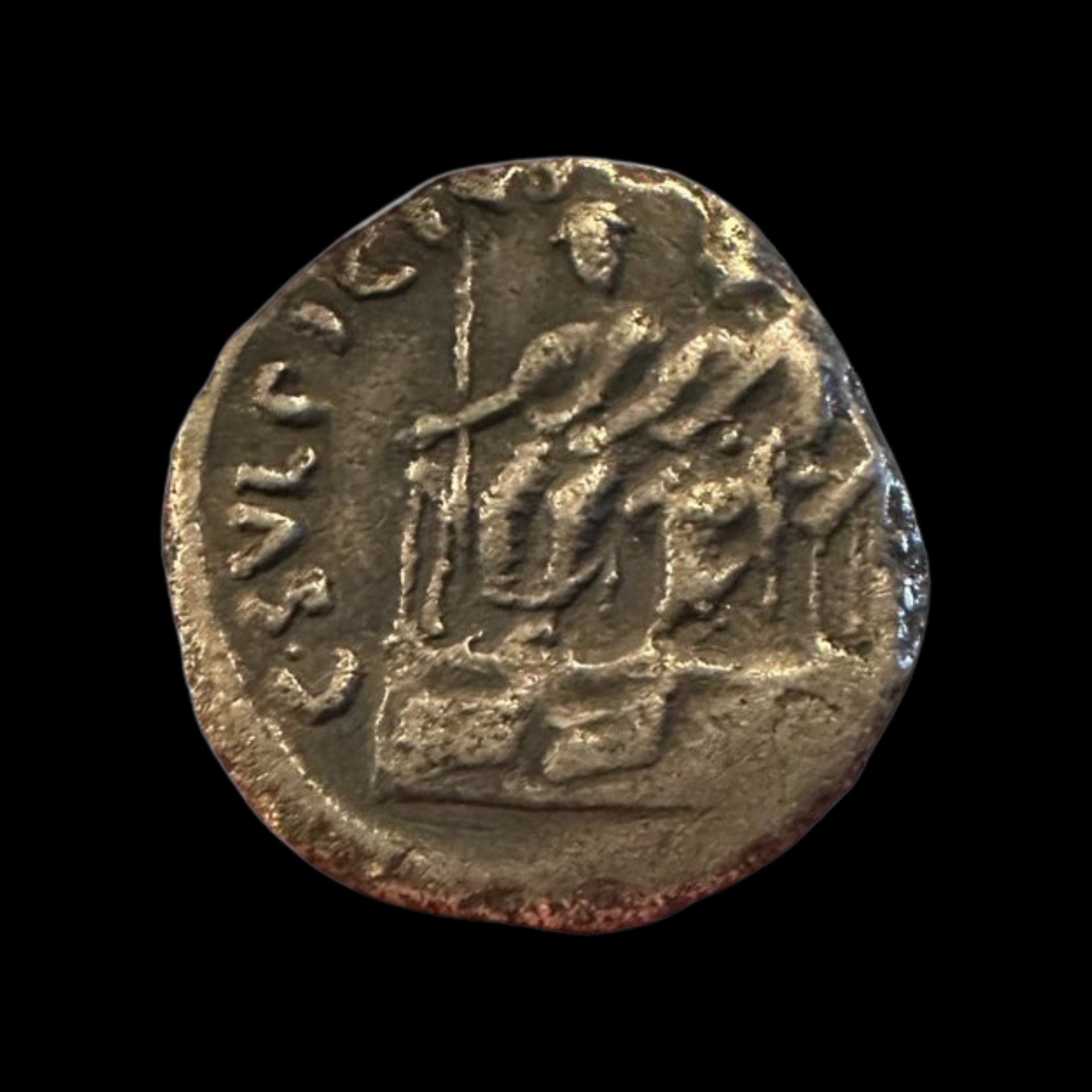 Image 1 of 4
Image 1 of 4

 Image 2 of 4
Image 2 of 4

 Image 3 of 4
Image 3 of 4

 Image 4 of 4
Image 4 of 4





Roman AE Of Vabalathus And Aurelian (about 1,750 years ago)
This bronze coin represents a fascinating moment in Roman history when two rulers appeared on the same coinage: Emperor Aurelian and Vabalathus, son of Queen Zenobia of Palmyra. These unusual coins were minted during a brief period of political compromise before Aurelian forcefully reintegrated the breakaway Palmyrene Empire back into Roman control.
Coin Description:
Front side: Likely features the portrait of Vabalathus, with Latin inscriptions identifying him with titles reflecting his semi-autonomous status
Back side: Probably displays Emperor Aurelian's portrait or imperial symbols, acknowledging his ultimate authority over the Roman Empire
Technical Details:
Bronze composition (copper alloy)
AE denomination (bronze coinage)
NGC certified (Numismatic Guaranty Corporation)
Minted approximately 270-272 CE in eastern provincial mints
Condition: Certified by NGC, specific grade not provided
Historical Significance: This rare coin represents a unique political compromise during the Crisis of the Third Century. After Queen Zenobia of Palmyra established control over eastern provinces including Egypt and Syria, Emperor Aurelian initially recognized her son Vabalathus as a subordinate ruler. These joint-portrait coins reflect this arrangement, with Vabalathus acknowledged as "King" and "Leader" while still recognizing Aurelian's supreme authority. This compromise lasted only briefly before Aurelian decisively defeated Palmyrene forces and reintegrated the eastern provinces, making these coins a rare snapshot of this transitional political moment.
This bronze coin represents a fascinating moment in Roman history when two rulers appeared on the same coinage: Emperor Aurelian and Vabalathus, son of Queen Zenobia of Palmyra. These unusual coins were minted during a brief period of political compromise before Aurelian forcefully reintegrated the breakaway Palmyrene Empire back into Roman control.
Coin Description:
Front side: Likely features the portrait of Vabalathus, with Latin inscriptions identifying him with titles reflecting his semi-autonomous status
Back side: Probably displays Emperor Aurelian's portrait or imperial symbols, acknowledging his ultimate authority over the Roman Empire
Technical Details:
Bronze composition (copper alloy)
AE denomination (bronze coinage)
NGC certified (Numismatic Guaranty Corporation)
Minted approximately 270-272 CE in eastern provincial mints
Condition: Certified by NGC, specific grade not provided
Historical Significance: This rare coin represents a unique political compromise during the Crisis of the Third Century. After Queen Zenobia of Palmyra established control over eastern provinces including Egypt and Syria, Emperor Aurelian initially recognized her son Vabalathus as a subordinate ruler. These joint-portrait coins reflect this arrangement, with Vabalathus acknowledged as "King" and "Leader" while still recognizing Aurelian's supreme authority. This compromise lasted only briefly before Aurelian decisively defeated Palmyrene forces and reintegrated the eastern provinces, making these coins a rare snapshot of this transitional political moment.
This bronze coin represents a fascinating moment in Roman history when two rulers appeared on the same coinage: Emperor Aurelian and Vabalathus, son of Queen Zenobia of Palmyra. These unusual coins were minted during a brief period of political compromise before Aurelian forcefully reintegrated the breakaway Palmyrene Empire back into Roman control.
Coin Description:
Front side: Likely features the portrait of Vabalathus, with Latin inscriptions identifying him with titles reflecting his semi-autonomous status
Back side: Probably displays Emperor Aurelian's portrait or imperial symbols, acknowledging his ultimate authority over the Roman Empire
Technical Details:
Bronze composition (copper alloy)
AE denomination (bronze coinage)
NGC certified (Numismatic Guaranty Corporation)
Minted approximately 270-272 CE in eastern provincial mints
Condition: Certified by NGC, specific grade not provided
Historical Significance: This rare coin represents a unique political compromise during the Crisis of the Third Century. After Queen Zenobia of Palmyra established control over eastern provinces including Egypt and Syria, Emperor Aurelian initially recognized her son Vabalathus as a subordinate ruler. These joint-portrait coins reflect this arrangement, with Vabalathus acknowledged as "King" and "Leader" while still recognizing Aurelian's supreme authority. This compromise lasted only briefly before Aurelian decisively defeated Palmyrene forces and reintegrated the eastern provinces, making these coins a rare snapshot of this transitional political moment.
Septimius Vaballathus (Palmyrene Aramaic: 𐡥𐡤𐡡𐡠𐡫𐡶 Wahbʾalat; Arabic: وهب اللات, romanized: Wahb Allāt "Gift of Allāt"; c. 259 – c. 274 AD) was emperor of the Palmyrene Empire centred at Palmyra in the region of Syria. He came to power as a child under his regent mother Zenobia, who led a revolt against the Roman Empire and formed the independent Palmyrene Empire.
Lucius Julius Aurelius Septimius Vaballathus was born and raised in the city of Palmyra, an oasis settlement in the Syrian Desert in 259 to the king of kings of Palmyra, Odaenathus, and his second wife, the queen consort of Palmyra, Zenobia. Vaballathus is the Latinized form of his Palmyrene name, Wahballāt, "Gift of Allāt". As the Arabian goddess Allāt came to be identified with Athena, he used Athenodorus as the Greek form of his name.[2] He had a half-brother, Hairan I, born from his father and another woman, who reigned as co-king of kings with his father, and a lesser-known brother, Hairan II. He also might have had other brothers, who were mentioned in (and only known from) the Historia Augusta, Herennianus and Timolaus.[3] Herennianus may be Hairan; while Timolaus is probably a fabrication.[4]
In 267, a relative, perhaps a cousin of his father named Maeonius, murdered Odaenathus and his half-brother Hairan I. The unreliable Historia Augusta lists Maeonius as one of the "Thirty Tyrants" that claimed imperial power during Gallienus' reign. However, this is most likely an invention; according to the chronicler Joannes Zonaras, Maeonius was executed immediately after the murder.[5] With Odaenathus and his oldest son dead, the succession came to his younger son, Vaballathus. The young Vaballathus was made king (rex clarissimus imperator dux Romanorum, "illustrious King of Kings" and corrector totius orientis) of the Palmyrene Empire at eight years old. Being too young to rule, his mother Zenobia ruled as queen regent and was the de facto ruler of Palmyra.

































